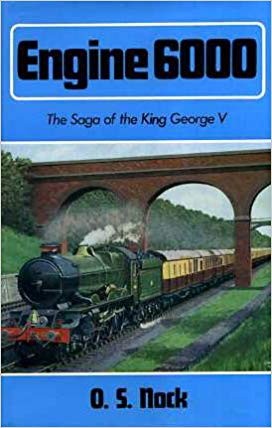O.S.Nock tells the story of the King George V from personal acquaintance with many of the men involved in its design, construction and operation. He has studied the developments carried out on the engine and her class after World War II to keep a design that was then twenty years old in the forefront of British steam locomotive practice. First Edition, pp. 108 illusts index #0918Steam locomotive, No 6000, ‘King George V’, King Class, 4-6-0, Great Western Railway, designed by Charles B. Collett, built at Swindon Works in 1927, withdrawn in 1962. Length over buffers: 68′ 2″; width: 8′ 12″; weight: 89 tons; driving wheel diameter: 6’ 6”.King George V was the prototype for Great Western Railway’s (GWR) King class; it was the first of a thirty strong fleet built in Swindon from 1927-1930 in order to meet the demands of rising passenger numbers and heavier carriages. In the late 1950s the front end frames of a number of Kings, including No. 6000, were renewed.The King class was also the most powerful ever British 4-6-0 design; it had the highest permissible axle load of 22½ tons, and the largest fire grate of 34.3 square feet of any British narrow firebox locomotive design.King George V was withdrawn from service in 1962. It was subsequently preserved at Swindon and then at Bulmer’s Railway Centre in Hereford. In 1971 the locomotive broke a three year ban on steam locomotives on the mainline which came into effect in 1969, thus consolidating its place in preservation history.
Engine 6000: The Saga of the “King George V”
$18.00
Sold Out
Additional Information
| Author | O. S. Nock |
|---|---|
| Publisher | David & Charles |
| Year Published | 1972 |
| Book Condition | VG+ (Very Good plus) |
|---|---|
| Binding Type | Hardcover in Dustjacket |
